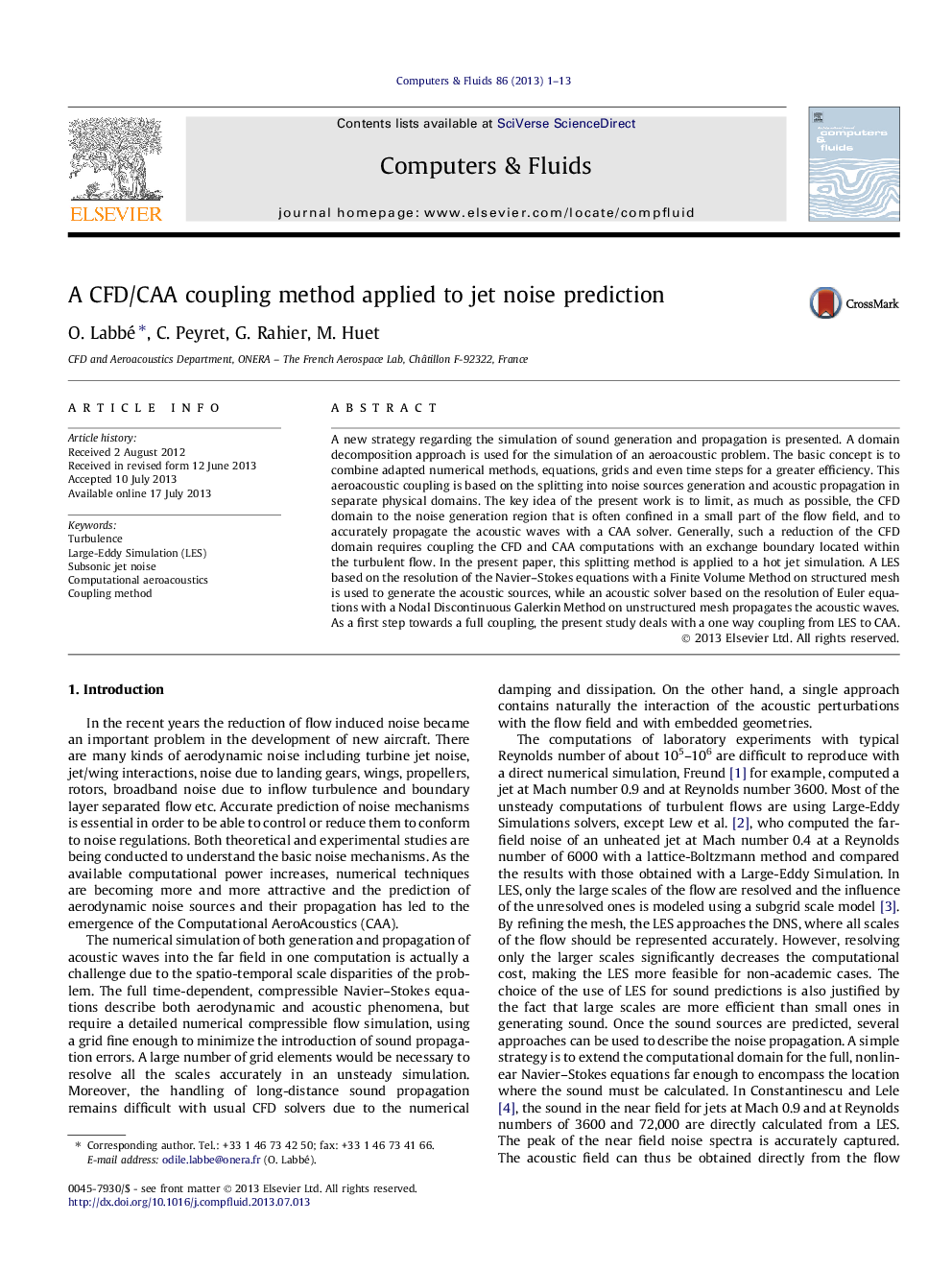| Article ID | Journal | Published Year | Pages | File Type |
|---|---|---|---|---|
| 7157426 | Computers & Fluids | 2013 | 13 Pages |
Abstract
A new strategy regarding the simulation of sound generation and propagation is presented. A domain decomposition approach is used for the simulation of an aeroacoustic problem. The basic concept is to combine adapted numerical methods, equations, grids and even time steps for a greater efficiency. This aeroacoustic coupling is based on the splitting into noise sources generation and acoustic propagation in separate physical domains. The key idea of the present work is to limit, as much as possible, the CFD domain to the noise generation region that is often confined in a small part of the flow field, and to accurately propagate the acoustic waves with a CAA solver. Generally, such a reduction of the CFD domain requires coupling the CFD and CAA computations with an exchange boundary located within the turbulent flow. In the present paper, this splitting method is applied to a hot jet simulation. A LES based on the resolution of the Navier-Stokes equations with a Finite Volume Method on structured mesh is used to generate the acoustic sources, while an acoustic solver based on the resolution of Euler equations with a Nodal Discontinuous Galerkin Method on unstructured mesh propagates the acoustic waves. As a first step towards a full coupling, the present study deals with a one way coupling from LES to CAA.
Related Topics
Physical Sciences and Engineering
Engineering
Computational Mechanics
Authors
O. Labbé, C. Peyret, G. Rahier, M. Huet,
